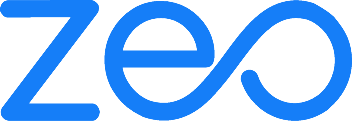Welcome to the dynamic world of retail inventory management, where the right strategies can make all the difference between thriving and struggling. In this blog, we’ll explore the essential do’s and don’ts of retail inventory management that will help you stay ahead of the competition, optimize your operations, and deliver a seamless shopping experience to your customers. Let’s dive in!
Do’s
- Conduct Regular Stock Audits
The foundation of efficient inventory management lies in conducting regular stock audits. Regular physical counts of your products help you maintain accurate records and identify discrepancies. These audits enable you to track stock levels accurately, prevent stockouts, and reduce the risk of overstocking. - Leverage Inventory Management Software
Embrace the power of technology with inventory management software. A robust software solution streamlines inventory control, tracks sales trends, and automates reorder processes. The software’s real-time data empowers you to make data-driven decisions, minimize errors, and enhance efficiency. - Embrace JIT Inventory
Just-In-Time (JIT) inventory management is a game-changer for retail businesses. With JIT, you order products to arrive just in time for sale, reducing the need for excessive storage space and cutting carrying costs. This approach ensures that your inventory is fresh and up-to-date, preventing obsolescence and waste. - Set Par Levels & Reorder Points
Establish par levels and reorder points for each product based on historical sales data and lead times to maintain a well-balanced inventory. Par levels represent the minimum quantity needed to meet customer demand until the next shipment arrives, while reorder points indicate when it’s time to place new orders, preventing stockouts. - Implement FIFO Method (First-In, First-Out)
To prevent product spoilage and obsolescence, prioritize the FIFO method. This means selling older products before newer ones, ensuring that items are moved out of inventory before expiration. FIFO maintains product freshness and customer satisfaction. - Optimize Storage Space
Efficient utilization of storage space is crucial in retail inventory management. Organize your products based on demand and category, and utilize vertical shelving, storage bins, and labeling systems to maximize space and enable easy access to items. A well-organized stockroom reduces search time and minimizes the risk of misplaced goods.
Read more: Streamlining Retail Delivery Processes Through Route Planning Solutions
Don’ts
- Neglect Seasonality
Ignoring seasonal demand can lead to costly mistakes. Analyze sales patterns and plan for seasonal fluctuations to avoid overstocking items that may not sell during certain periods. Adapt your inventory to meet the changing needs of your customers throughout the year. - Rely Only on Manual Systems
Manual inventory management is prone to errors and inefficiencies. Avoid relying solely on spreadsheets or paper-based systems, as they make tracking real-time data difficult. Instead, embrace technology and integrate it into your inventory management processes to minimize the risk of human error. - Ignore Slow-Moving Items
Paying little attention to slow-moving items ties up valuable capital and storage space. Monitor the performance of each product and identify slow-moving items early. Consider offering promotions or discounts to clear them or discontinuing products with consistently low demand. - Overlook Employee Training
Properly trained employees are crucial to the success of your inventory management efforts. Provide comprehensive training to your staff to ensure they thoroughly understand the inventory management procedures. Well-trained employees optimize order fulfillment, reduce errors, and improve overall efficiency. - Skimp on Security Measures
Retail inventory theft is a significant concern that can impact your bottom line. Implement robust security measures like surveillance cameras, access controls, and anti-theft tags. A secure environment protects your inventory and helps maintain profitability. - Disregard Customer Feedback
Customer feedback is a valuable source of insight. Monitor customer preferences and demand to adjust your inventory accordingly. Stay attentive to customer needs and preferences to maintain a competitive edge in the market.
Read more: The Role of Delivery Partnerships in Retail: Expanding Reach and Enhancing Delivery Options
Mastering the Art of Retail Inventory Management!
Achieving retail inventory management success requires a delicate balance of strategic planning, smart technology, and customer-centric focus. By following the do’s and avoiding the don’ts, you can streamline your operations, minimize costs, and enhance the overall shopping experience for your customers.
Remember to embrace technology and elevate your retail inventory management game to set yourself apart in the competitive retail landscape. Now, armed with these do’s and don’ts, embark on your journey to retail success and watch your business thrive seamlessly!

increase fuel savings
Save 2 Hours on Deliveries, Everyday!
Optimize routes with our algorithm, reducing travel time and costs efficiently.
Get Started for Free
Additionally, consider checking out Zeo Route Planner for Fleets to optimize your retail deliveries and better manage your fleets. Zeo empowers you to optimize routes for order deliveries, manage your fleet, reduce fuel costs, and improve efficiency.
Book a free demo to learn more!

Are you a fleet owner?
Want to manage your drivers and deliveries easily?
Grow your business effortlessly with Zeo Routes Planner – optimize routes and manage multiple drivers with ease.

increase fuel savings
Save 2 Hours on Deliveries, Everyday!
Optimize routes with our algorithm, reducing travel time and costs efficiently.
Get Started for Free




















